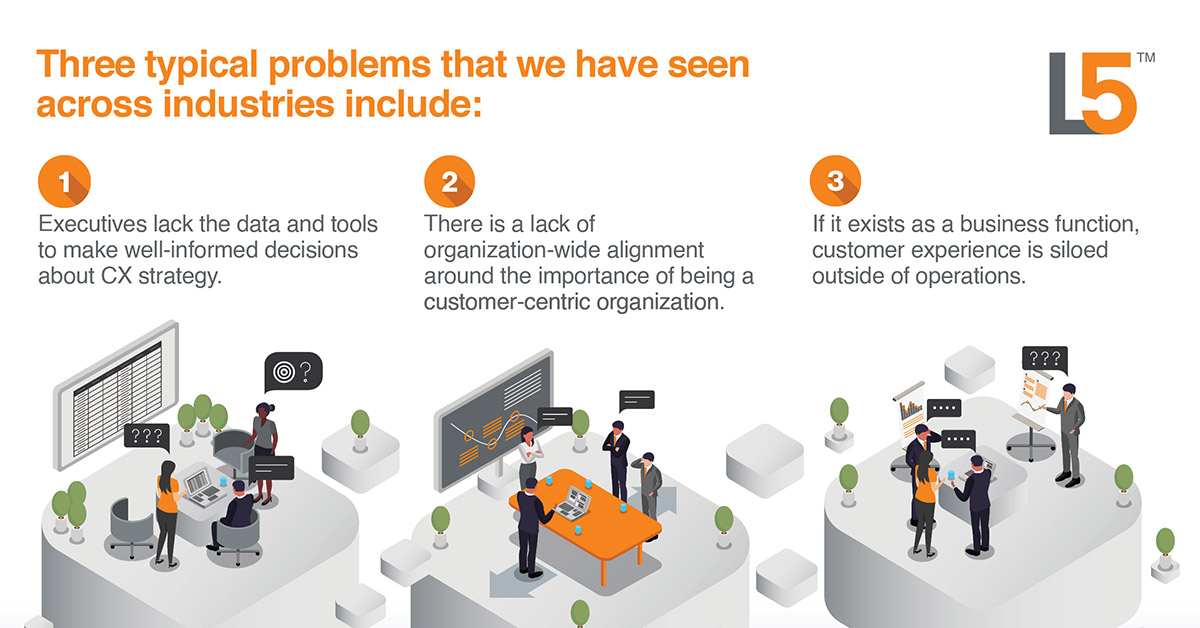
When building a best-in-class customer experience, understanding the customer journey and identifying opportunities to improve at Moments of Truth is just the beginning. Organizations must translate journey insights into actionable initiatives to deliver meaningful returns on their investments.
The Lay of the Land for Customer Experience:
More and more companies are understanding the need for customer-centricity. Confirmed by our recent research, we see companies maturing on foundational CX dimensions such as understanding customer drivers and identifying where they manifest along the journey as “Moments of Truth”.


Level5 conducted research shared in a three-part series that uncovered small and large organizations appeared to have a higher degree of customer-centric maturity than mid-scale organizations. However, a recent research refresh paints a different picture. Mid-sized organizations have improved slightly on both Promise and Consistently Kept scores, closing the gap to their larger peers (who have decreased in performance over the past 18-months). Smaller-scale companies are seeing a drop in their customer-centric maturity, perhaps due to exceptional challenges they have faced trying to survive during and after the pandemic.
Operationalization could be the key. We found that measurement of customer experience is a strong predictor of CX maturity. Organizations that develop systems of measurement and executive reporting for key customer experience metrics are 2.5x more likely to overperform against their expectations. But this is easier said than done since many companies still fail to do this effectively, meaning that they miss out on the ability to leverage customer experience insights for strategic discussions as well as day-to-day operations.
Consistent Gaps in Operationalizing Customer-Centricity
A major challenge for organizations that we work with, which also surfaces in our data, is the operationalization of the customer experience, which we define as the extent to which a company can embed customer-centric best practices into its business structure and operations.
On a practical level, this can mean many things, from:
- Turning customer insights into strategic initiatives as part of annual planning to;
- Establishing a cross-functional matrix operating structure to manage continuous improvements within the customer experience, or;
- Developing systems to collect, interpret, and draw insights from customer experience data.
Organizations may have to overcome a variety of roadblocks to successfully transform and operationalize a customer experience strategy.

Through our experiences advising clients who face these problems, we have identified four steps among the companies that emerge successful. First, they analyze. Then, they ideate. Next, they prioritize. Finally, they execute. The next piece in this series will outline this process in greater detail.
Does your organization need a tangible, actionable plan to drive customer experience initiatives forward? Contact Laura Richard or Joseph Smith.



